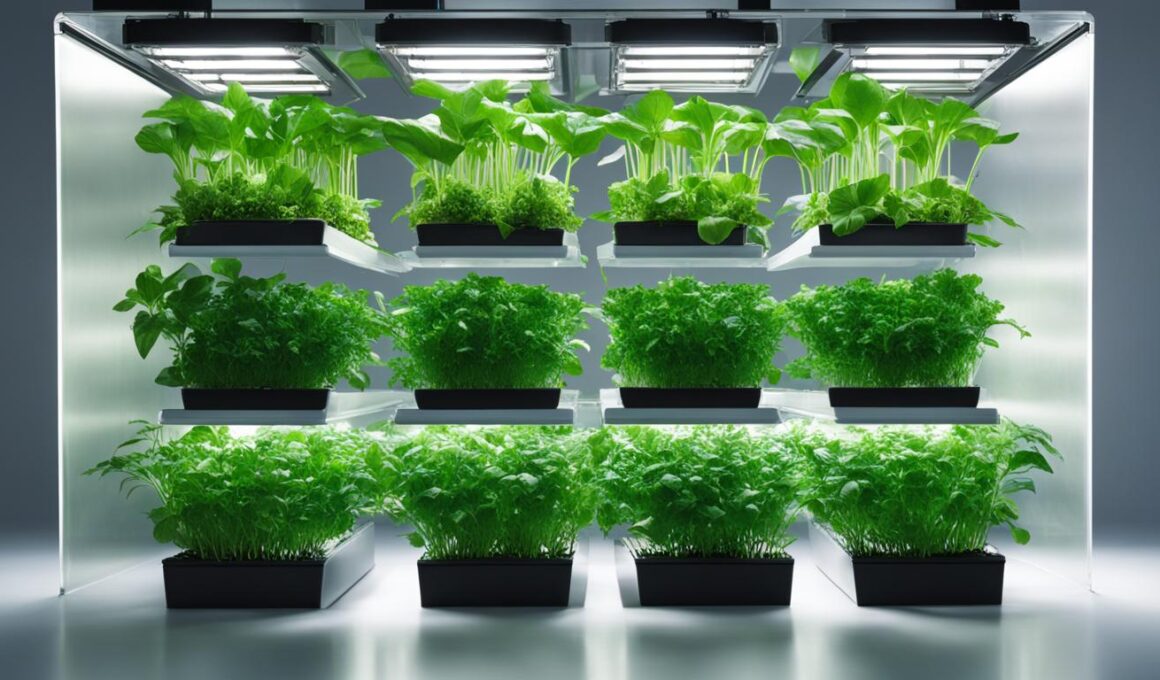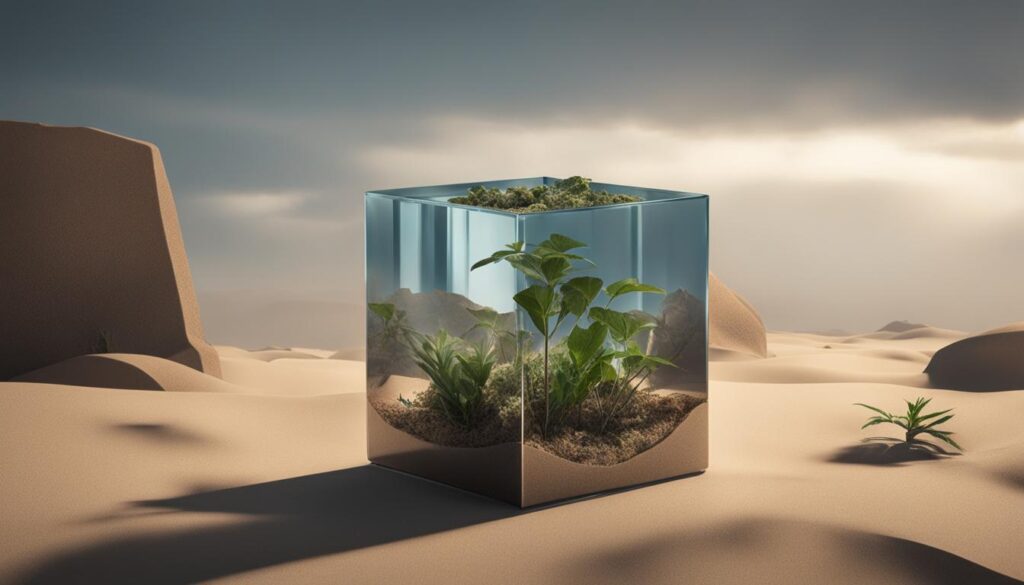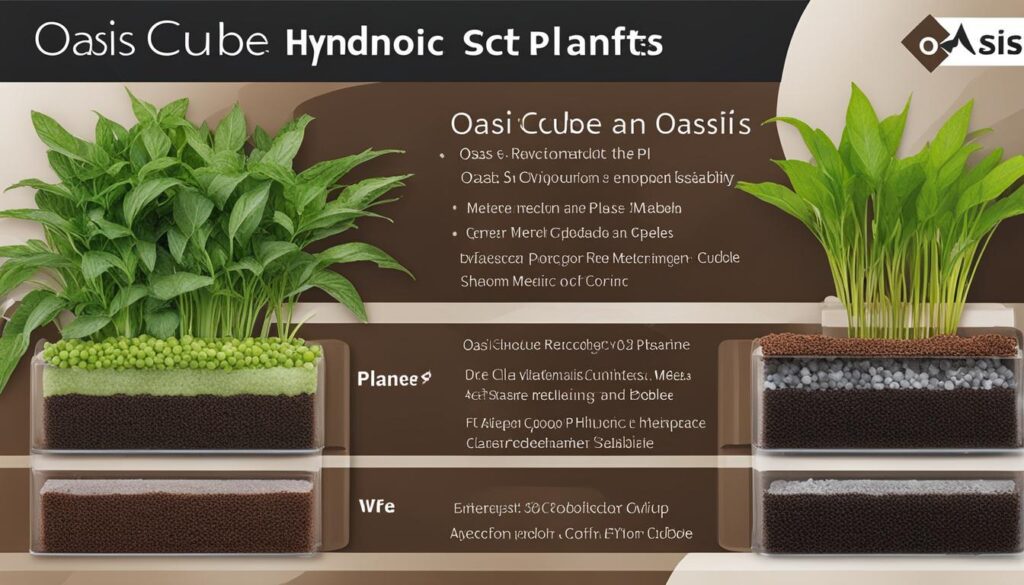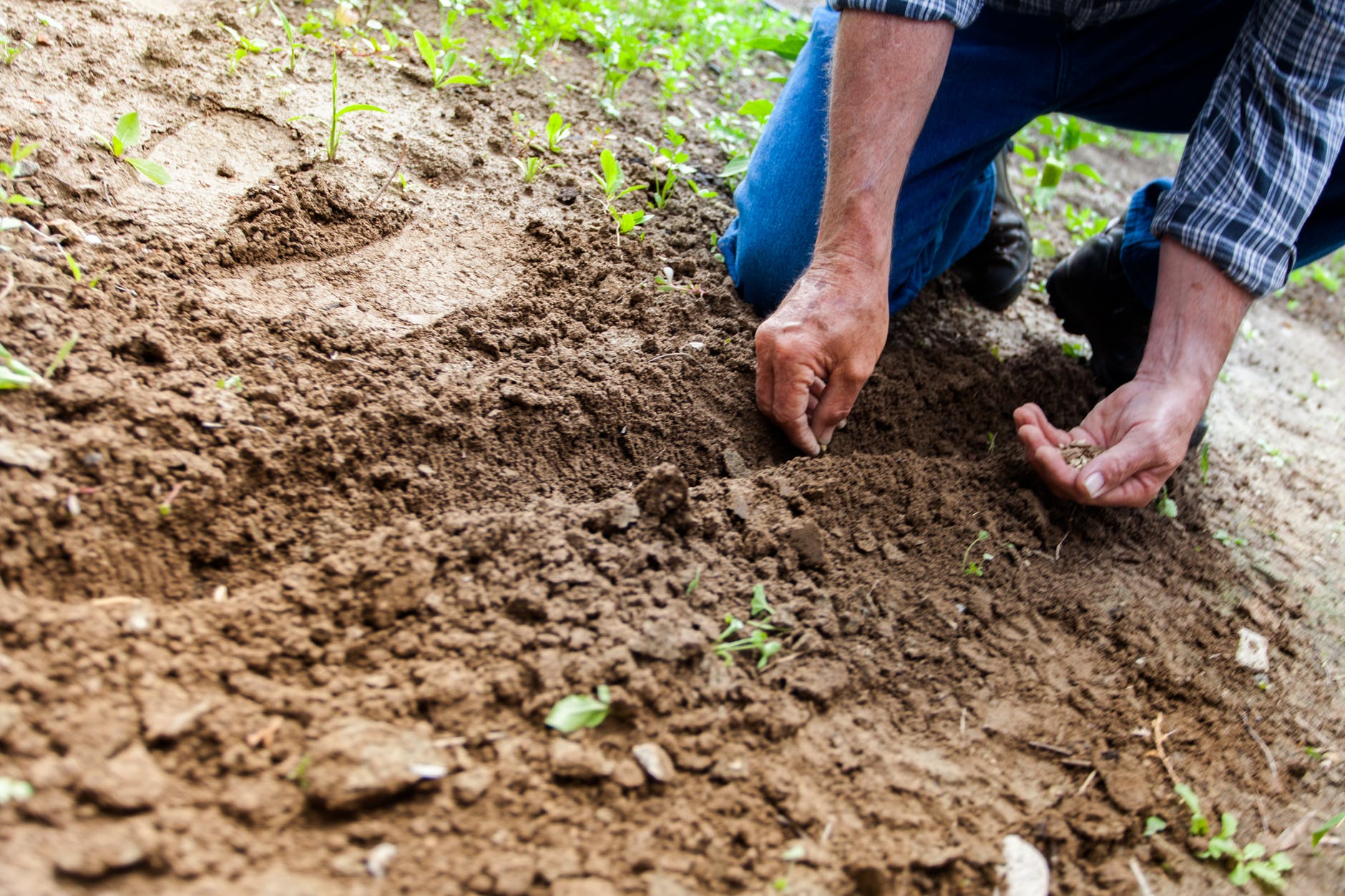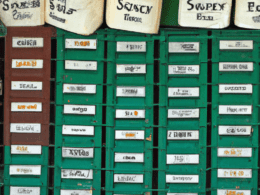As an alternative to traditional soil-based growth, hydroponics has gained traction in the world of horticulture. Among the numerous hydroponic media available, Oasis Cubes have emerged as an accessible and affordable option. But are these cubes truly advantageous for your hydroponic journey? In this article, we delve into the pros and cons of Oasis Cubes to provide you with a comprehensive hydroponic media review.
Oasis Cubes, made from a foam-like material similar to Oasis floral foam for hydroponics, are primarily used for germinating seeds and supporting seedling growth. While they offer benefits such as cost-effectiveness and a simple setup, they may not be suitable for every stage of plant growth. Furthermore, their environmental impact raises questions about their sustainability compared to other hydroponic media.
Key Takeaways
- Oasis Cubes are an affordable hydroponic media option for seed germination and early growth.
- The foam-like composition of Oasis Cubes allows for efficient water and air absorption.
- While cost-effective and easy to use, Oasis Cubes have limitations in supporting full plant life cycles.
- Compared to other hydroponic media, Oasis Cubes may offer less versatility and sustainability.
- Environmental concerns regarding the production and disposal of Oasis Cubes should be considered when choosing a hydroponic media.
Introduction to Hydroponic Growing Media
Hydroponic systems have revolutionized the way plants are cultivated, allowing for precise control over the growing environment and providing a soil-free alternative for growers. Central to the success of these systems are specially formulated growing media that support plant roots, maintain the optimal water/oxygen ratio, and cater to the unique needs of hydroponically grown plants.
Various materials can be employed as growing media in hydroponic systems, each with its own distinct benefits and drawbacks. In this article, we will focus on four popular materials: coco coir, rockwool, perlite, and vermiculite, as well as discuss expanded clay pellets (hydroton). By understanding the properties of different media, you can make informed decisions about which is best suited for your specific needs and ensure the health and growth of your plants in a hydroponic ecosystem.
- Coco coir
- Rockwool
- Perlite
- Vermiculite
- Expanded clay pellets (hydroton)
Let’s take a closer look at how these media fulfill their essential roles in supporting roots hydroponically, and the factors to consider when choosing the right growing media for your hydroponic system.
| Material | Benefits | Drawbacks |
|---|---|---|
| Coco coir | Excellent water retention, air space, and drainage; biodegradable and sustainable | Requires pre-soaking and buffering; potential for nutrient imbalances |
| Rockwool | Stable and predictable environment; great water-to-air ratio | Non-biodegradable; potential respiratory and skin irritation |
| Perlite | Lightweight and porous; excellent drainage and aeration | Non-biodegradable; tends to float in water-based systems |
| Vermiculite | High water retention; improves cation exchange capacity | Compacts easily; may reduce oxygen availability to roots |
| Expanded clay pellets (hydroton) | Reusable and lightweight; provides good root aeration and stability | May require pre-soaking; less effective at retaining water |
Each of these materials offers unique advantages in terms of supporting roots, managing water/oxygen ratios, and fostering healthy plant growth in hydroponic systems. The choice of medium influences not only plant health and growth, but also the overall ecosystem that you aim to create. Deciding which of these materials best meets your requirements will ultimately depend on the goals of your hydroponic system and the specifics of your growing setup.
Oasis Cubes Explained: What Are They?
Originating from the same material as the green floral foam found in flower arrangements, Oasis Cubes derive their composition from a foam-like substance specifically designed for facilitating plant germination. These Cubes create an inert environment, effectively shielding young plants during the critical period of initial root development. Given their ease of use, Oasis Cubes have become a favored hydroponic medium for starting seeds and seedlings in various hydroponic setups.
The Composition and Structure of Oasis Cubes
One key aspect of Oasis Cubes is their cellular structure that allows for efficient absorption of water and air. This encourages healthy early root growth and provides an optimal environment for seedlings to thrive. Oasis Cubes are composed of a phenolic foam which is inert and pH neutral, preventing them from affecting the delicate balance of nutrients and pH levels in your hydroponic system.
Initial Setup and Usage in Hydroponics
Utilizing Oasis Cubes in hydroponic systems is a remarkably straightforward process, especially for initial setup and usage. Their innate properties negate the need for pre-soaking, which is a common requirement for some other types of hydroponic media. Simply follow these steps when incorporating Oasis Cubes into your hydroponic setup:
- Place the dry Oasis Cubes in a tray or container.
- Water the Cubes with nutrient solution, allowing them to absorb and swell up automatically.
- Once swollen, insert the seeds or cuttings into the pre-cut holes in the Cubes.
- Monitor the growth process, maintaining optimal water and nutrient levels throughout.
- Upon successful seedling growth, carefully transplant the young plants to a more permanent hydroponic system or growth medium appropriate for long-term cultivation.
While Oasis Cubes are indeed a viable and accessible option for starting seeds and seedlings in hydroponics, it is important to remember that they are but one solution in a diverse field of hydroponic media types. Evaluating your specific needs and requirements is crucial in determining the best medium for your growth projects.
Assessing the Benefits: Pros of Using Oasis Cubes
Oasis Cubes bring a host of benefits to hydroponic gardeners, particularly when it comes to seed germination. Their cost-effectiveness and ease of use not only make them efficient but also suitable for growers of all experience levels. In this section, we’ll explore the advantages of these versatile cubes and what they offer in terms of germination success and overall efficiency.
Cost-Effectiveness: One of the most appealing features of Oasis Cubes is their affordability. As a hydroponic grower, you’ll appreciate the savings on start-up costs as compared to other growing media such as rockwool and coco coir.
Neutral pH and Water-Air Absorption: Oasis Cubes boast a neutral pH, requiring no adjustments before using them in your hydroponic system. Equally important, their unique cellular structure efficiently absorbs water and air, creating an optimal environment for seed germination.
- Quick and Easy Initial Setup:
- High Success Rate for Germination:
- Reuse and Repurpose:
Oasis Cubes do not require soaking or extensive pre-treatment before use, making them a convenient and time-saving choice for seed germination and seedling growth.
Thanks to their optimal water and oxygen absorption, Oasis Cubes contribute to successful seed germination and early-stage root growth, setting the stage for healthy and robust plant development.
Unused Oasis Cubes can be repurposed for other hydroponic applications, ensuring minimal wastage and maximizing the value of your investment.
Despite the numerous advantages Oasis Cubes offer for seed germination hydroponics, it’s essential to remember that they are not a one-size-fits-all solution for plant growth. As your plants mature and require more robust support and nutrients, transitioning to alternative growing media becomes necessary. Nevertheless, Oasis Cubes provide a solid starting point for any hydroponic garden, contributing to increased efficiency and successful seed germination.
Identifying the Drawbacks: Cons of Oasis Cubes
While Oasis Cubes offer undeniable benefits for seed germination, they also present some significant drawbacks. Understanding these limitations of Oasis Cubes is essential for hydroponic growers to make informed decisions about the suitability of this growing medium for their specific needs. Some notable disadvantages include their unsustainability, restriction to early plant growth stages, and inability to support plants throughout their entire life cycle.
- Unsustainable and non-organic: Oasis Cubes are synthetic and non-biodegradable, which can negatively impact the environment. Additionally, they are not suitable for growers who seek an organic growing medium.
- Limited use in the plant growth cycle: Oasis Cubes are primarily designed for germination and early plant development, which means transitioning to alternative growth media as plants mature becomes necessary. Thus, considering hydroponic growth challenges with other media is crucial for growers looking for a complete growing solution.
- Not suitable for long-term support: Due to their composition, Oasis Cubes are unable to support plants for extended periods, especially during the flowering or fruiting stages. As a result, growers need to find alternative media that can provide support for the full life cycle of their plants.
To better understand the limitations of Oasis Cubes, the following table compares some key aspects of various hydroponic growing media:
| Growing Media | Sustainability | Applicable Growth Stages | Full Life Cycle Support |
|---|---|---|---|
| Oasis Cubes | No | Germination and early seedling growth | No |
| Coco Coir | Yes | All growth stages | Yes |
| Rockwool | No | All growth stages | Yes |
| Expanded Clay Pellets (Hydroton) | Yes | All growth stages | Yes |
In conclusion, while Oasis Cubes pose advantages in germination and early seedling growth, their limitations make them unsuitable for the entire plant life cycle. Hydroponic growers should carefully consider these drawbacks and weigh their options before deciding to use Oasis Cubes as their primary growing medium.
The Eco-Friendly Debate: Oasis Cubes and Sustainability
As a hydroponic grower, you may wonder about the environmental impact of the growing media you choose, including Oasis Cubes. Although these cubes excel in the areas of cost efficiency and germination, their sustainability and environmental considerations remain debated. In this section, we will analyze the ecological footprint left by Oasis Cubes in comparison with other organic and eco-friendly growing media.
Environmental Concerns Associated with Growing Media
Various growing media possess their unique environmental benefits and drawbacks. Factors such as material composition, production methods, and disposal procedures can all influence the ecological footprint a hydroponic medium leaves behind. While some media, such as coco coir and expanded clay, comprise natural or recycled elements, others like rockwool and Oasis Cubes are produced synthetically.
- Sustainability Hydroponic Media: Sustainable growing media, made of renewable and natural materials, promote a healthier planet and minimize ecological impact. Coco coir and hemp fiber serve as prime examples of sustainable alternatives to traditional hydroponic substrates.
- Environmental Impact of Hydroponics: The environmental consequences of hydroponics largely depend on the chosen growing media, system design, and management practices. Some hydroponic systems significantly reduce water usage, minimize pollution, and avoid soil degradation. However, the impact varies based on the specific materials and methods employed.
- Eco-Friendly Growing Media: Some growing media are specifically designed with the environment in mind. These eco-friendly materials aim to minimize their impact by using natural and renewable resources or by promoting recycling and repurposing. Peat moss, coconut coir, and perlite are common examples of environmentally conscious alternatives.
Compared to these eco-friendly options, Oasis Cubes are not considered a highly sustainable hydroponic medium. They are made from non-biodegradable materials that can take a significant amount of time to break down in landfills. Furthermore, their production process involves the use of chemicals and synthetic additives, which can harm the environment and release greenhouse gases during the manufacturing process.
| Hydroponic Media | Sustainability Factors | Environmental Considerations |
|---|---|---|
| Oasis Cubes | Non-biodegradable material, chemically produced | Non-organic, chemical waste generated in production |
| Coco Coir | Renewable and biodegradable resource | Low environmental impact, supports organic farming |
| Expanded Clay Pellets | Recyclable and reusable | Energy-intensive production process |
| Rockwool | Non-biodegradable, synthetic material | Chemical binder usage, high energy consumption in production |
In conclusion, while Oasis Cubes have compelling advantages during the germination phase, they are not considered the most environmentally friendly option. As a responsible hydroponic grower, it’s essential to weigh the ecological implications alongside the practical benefits when selecting a hydroponic growing medium.
Comparative Analysis: Oasis Cubes vs. Other Hydroponic Media
As a hydroponic grower, selecting the ideal growing medium for your plants is crucial to their success. In this section, we compare the strengths and weaknesses of Oasis Cubes with other popular hydroponic media, including coco coir, rockwool, and expanded clay, to help you make an informed decision.
| Hydroponic Media | Economic Efficiency | Versatility | Sustainability | Full Growth Cycle Support |
|---|---|---|---|---|
| Oasis Cubes | High | Low | Low | No |
| Coco Coir | Medium | High | High | Yes |
| Rockwool | Medium | Medium | Low | Yes |
| Expanded Clay | Low | High | Medium | Yes |
Oasis Cubes Comparison:
- Economic Efficiency: Oasis Cubes are highly efficient for starting new plants due to their cost-effectiveness, ease of use, and lack of pre-soaking requirements. However, they have limited use beyond germination and early root development.
- Versatility: They are less versatile than other hydroponic substrates, mostly due to their limited usage during the germination phase.
- Sustainability: Oasis Cubes aren’t sustainable, as they’re made from synthetic materials and are not environmentally friendly.
- Full Growth Cycle Support: As mentioned earlier, Oasis Cubes do not support plants throughout their entire growth cycle, necessitating a transition to a more comprehensive growing medium.
Comparing Hydroponic Substrates:
- Coco Coir offers versatility, sustainability, and full growth cycle support to plants. It is an organic and renewable by-product of the coconut industry and can be reused, making it an eco-friendly alternative.
- Rockwool, similar to Oasis Cubes, is a popular choice for seed germination. However, it supports plants throughout their entire growth cycle and requires pre-soaking. It is neither sustainable nor biodegradable.
- Expanded Clay is made of natural clay that has been heated and expanded, forming lightweight, porous pellets. It provides excellent aeration and drainage and can be reused, making it an environmentally friendly option. However, it’s more expensive than Oasis Cubes or Rockwool and may not be suitable for the germination phase.
In conclusion, while Oasis Cubes are an ideal choice for economical efficiency in the early growth stages, alternative hydroponic media such as coco coir, rockwool, and expanded clay offer better versatility, sustainability, and comprehensive growth cycle support. Ultimately, the decision will come down to your specific needs, preferences, and priorities when choosing the right hydroponic media for your plants.
Real Growers’ Experiences: Testimonials and Feedback on Oasis Cubes
In this section, we delve into the real-world experiences of hydroponic growers who have used Oasis Cubes in their cultivation approaches. By examining their feedback and testimonials, we can evaluate the practical advantages and disadvantages of employing this particular growing medium.
| Grower | Experience | Feedback |
|---|---|---|
| Emily Wilson | Beginner hydroponic gardener | Oasis Cubes were an affordable and easy introduction to hydroponics, providing a successful germination phase. |
| Jason Harris | Experienced hydroponic lettuce farmer | Switched to Oasis Cubes from rockwool for the germination stage, noting significant cost savings and similar root development. |
| Nancy Thompson | Mid-level hydroponic herb cultivator | Appreciated the ease of use of Oasis Cubes, but had to transfer seedlings to a more comprehensive growing medium for continued growth. |
According to the Oasis Cubes testimonials, many hydroponic growers discovered tangible benefits, such as cost savings and ease of use when compared to rockwool. The improved formulation of Oasis Cubes has earned positive hydroponic growers’ feedback for its role in the germination stage. Hearkening back to Emily’s and Jason’s experiences, it’s clear that the medium can work wonders in jumpstarting a seed’s root development, whether the grower is a novice or a seasoned professional.
- Cost-effective for germination and initial seedling growth
- Neutral pH allows for versatile planting applications
- Efficient water and oxygen absorption in the cellular structure
However, acknowledgments of the real-world hydroponics experience also underscore the limits of Oasis Cubes. As illustrated by Nancy’s testimonial, many growers would concur that transitioning to a more comprehensive medium is often necessary beyond the initial phase.
In conclusion, while Oasis Cubes prove to be a valuable option for the germination stage of hydroponic cultivation, they may not suffice as a complete, standalone solution for an entire plant’s life cycle. By actively weighing the insights gleaned from real growers’ experiences, you can make informed decisions about whether Oasis Cubes are indeed the optimal choice for your hydroponic endeavors.
What Are the Pros and Cons of Using Oasis Cubes in Hydroponic Systems?
When using Oasis cubes in hydroponic systems, the benefits of hydroponics are evident. These inert, easily customizable cubes provide consistent moisture and nutrient delivery to plants. However, their cost and potential for mold growth are notable concerns. Overall, their convenience and efficiency make them a popular choice in hydroponic gardening.
Conclusion
In summary, Oasis Cubes have proven to be an effective and economical solution for the initial stages of plant growth in hydroponic systems. They offer advantages such as cost-effectiveness, efficient water and air absorption, and easy initial setup that contribute to hydroponics success.
However, it is crucial to remember that the benefits of Oasis Cubes are primarily restricted to germination and early seedling development. As your plants grow and mature, transitioning to a more suitable and sustainable hydroponic medium is necessary for long-term plant health and productivity.
The environmental impact of using Oasis Cubes also remains a relevant concern to consider when selecting a hydroponic medium. Therefore, the choice of the ideal growing medium often depends on a balance between plant needs, grower preferences, and ecological considerations, ensuring a successful and sustainable hydroponics experience in the long run.





